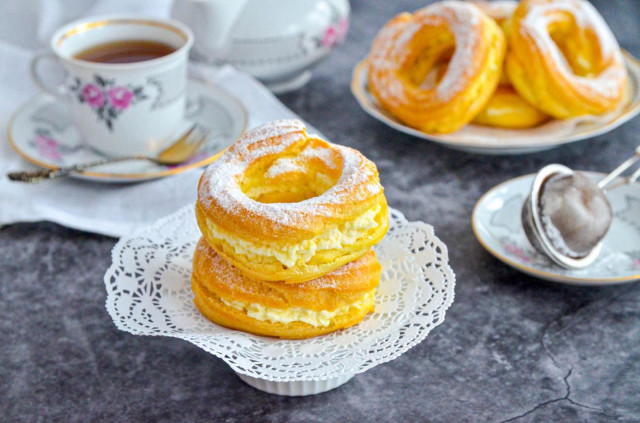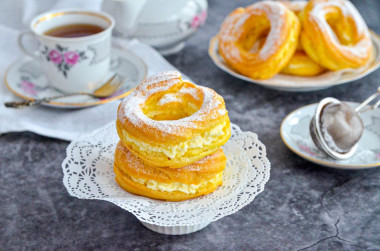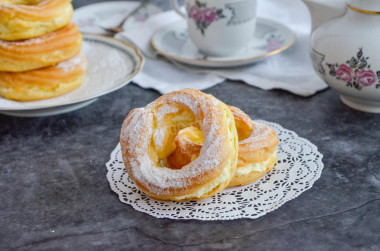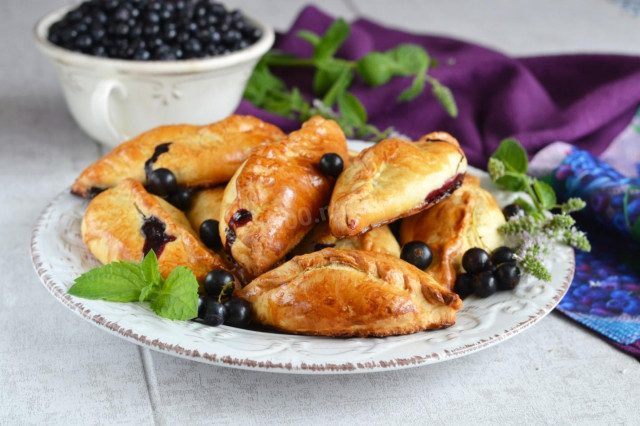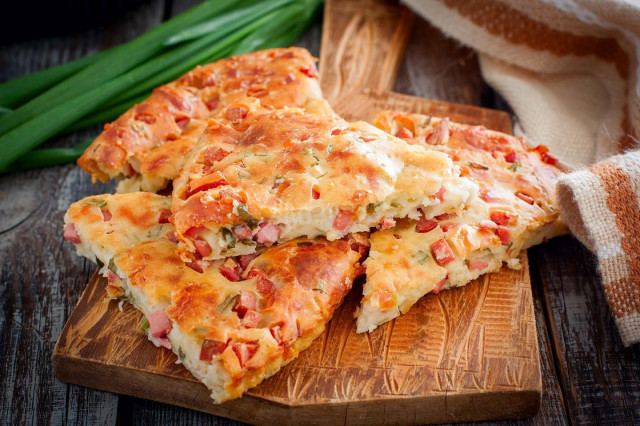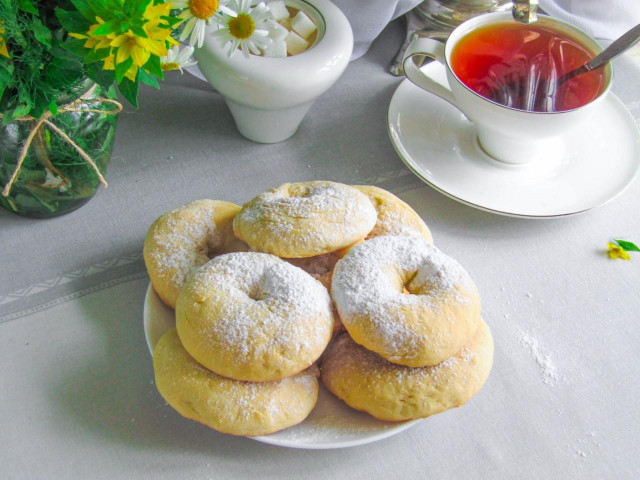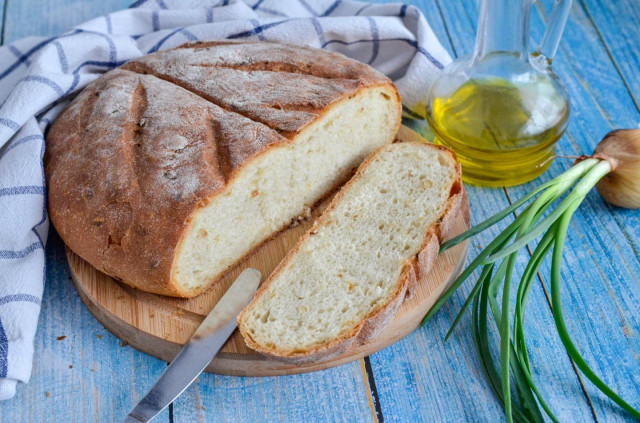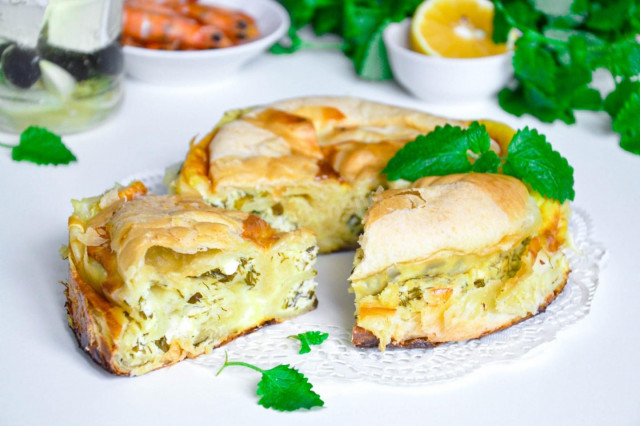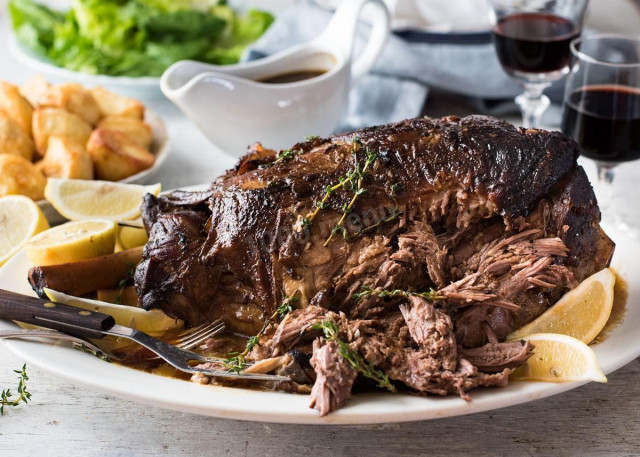Composition / ingredients
Step-by-step cooking
Step 1:
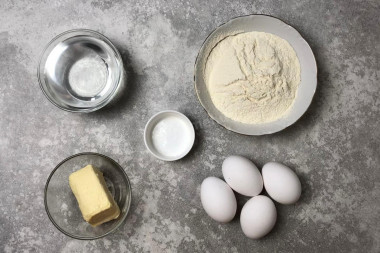
How to make custard rings with cottage cheese cream? Prepare the products for making the dough. I always take the eggs of the zero category. The dough can take from three to four eggs, this will be found out during the kneading process. But just in case, prepare four eggs. Flour for this type of dough is not necessary to sift, it will be brewed, and eggs will give the dough airiness.
Step 2:
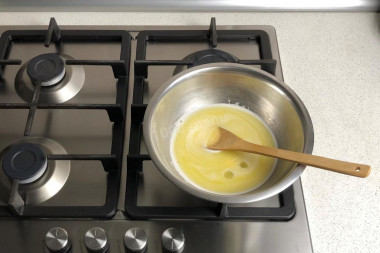
Take any dishes that can be put on the fire. Pour water into it, put oil, add a pinch of salt. Put it on medium heat. With light stirring, first wait for the oil to melt, and then the mixture to boil. It will take quite a bit of time, no more than 5 minutes.
Step 3:
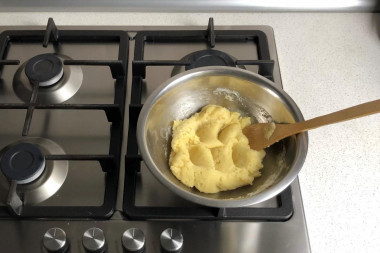
As soon as the water boils, pour all the flour into it at once. Without removing from the heat, immediately begin to actively stir the flour with water, achieving a homogeneous mixture. This is how you brew flour. Do not remove the dishes from the fire for several minutes, stirring the dough all the time. Gradually, it will gather into a lump, and a kind of "velvet" layer will begin to form at the bottom - this is a signal that everything is ready, you can take it off.
Step 4:
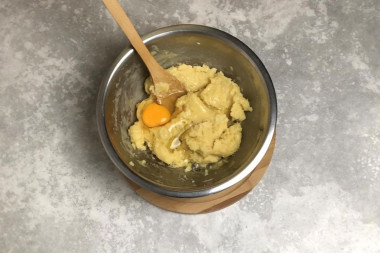
Cool the dough to a warm state, it will take about 10 minutes. And start injecting eggs into it one by one. Broke one - and actively start mixing. I always do it manually, with a spatula or spoon. You can use both a mixer and a whisk - it's a matter of habit.
Step 5:
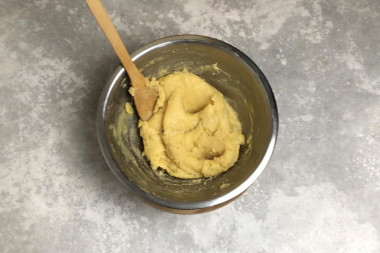
At first it will seem to you that the egg and dough will never mix, they will hang out in the bowl from side to side separately. But gradually the mass will begin to become homogeneous and smooth. As soon as this happens, add the second egg and start kneading again.
Step 6:
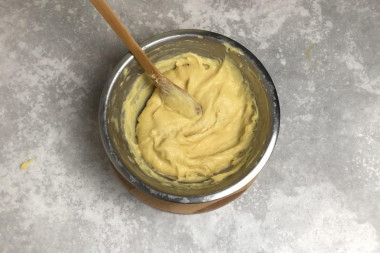
You can add three eggs safely. Then look at the status of the test. It should become very elastic so that it does not fall off the shoulder blade, but stretches smoothly. If the dough is not like that yet, take the fourth egg. First break it into a cup and mix. Add half first, mix, and then look at the fluidity of the dough. I didn't need the other half.
Step 7:
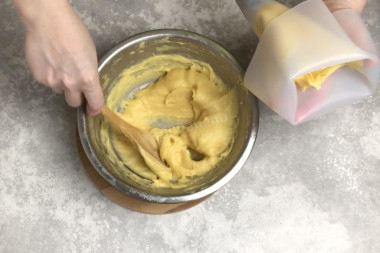
Put the finished dough into a pastry bag. For such rings, you will need a nozzle "open star". If you don't have a bag, then take a sturdy bag, put the dough in it and cut off one corner.
Step 8:
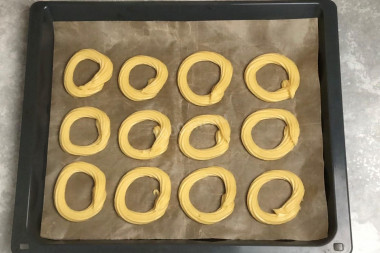
Cover the baking sheet with baking paper. I use a Teflon mat. Put the dough on it in the form of rings. Be sure to leave gaps between them, the custard dough grows during the baking process. Determine the exact time and temperature of baking according to your oven.
Step 9:
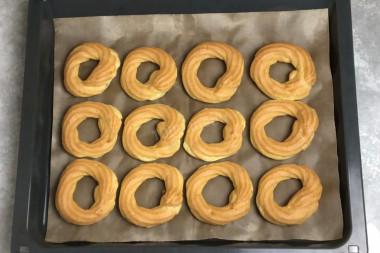
Bake the rings in an oven preheated to 200 °With about 25 minutes. Then reduce the temperature to 170 ° C and keep in the oven for another 5-10 minutes. Do not open the oven during baking, the rings may fall off. The finished rings will be plump, golden, easily separated from the paper, inside they should be dry and hollow. Leave the rings to cool.
Step 10:
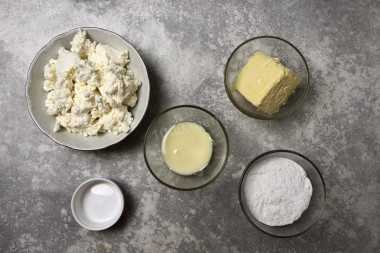
Prepare the products for making the cream. Cottage cheese can take any fat content, but the fatter, the tastier the cream will be. do not use granulated cottage cheese, it is not suitable for this kind of desserts. Remove the oil from the refrigerator in advance, it should become soft. Do not use sugar, namely powder, sugar in the oil will not dissolve and will make the cream grainy. take a drop of vanilla, as it is very intense in taste.
Step 11:
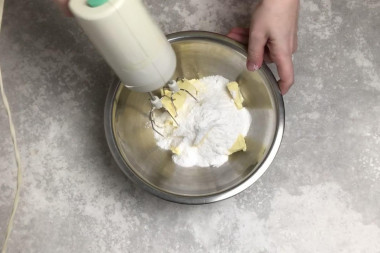
Add powdered sugar and vanilla to the soft butter, beat with a mixer.
Step 12:
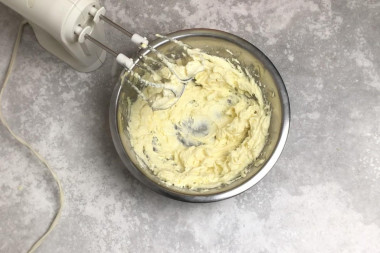
Put condensed milk, whisk again until smooth, smooth cream.
Step 13:
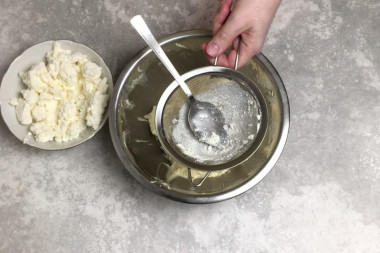
Add cottage cheese to the cream by rubbing it through a sieve. This process will make the cottage cheese homogeneous and tender. Instead of a sieve, you can pre-punch the cottage cheese with a blender.
Step 14:
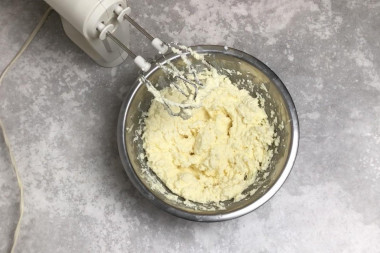
Take the mixer again and mix the cottage cheese with the butter mass. The finished cream is dense, but soft. transfer it to a pastry bag with the same star attachment. Or again use a regular bag with the corner cut off.
Step 15:
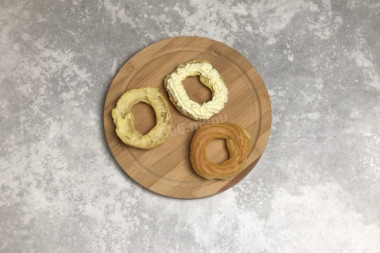
Cut the ring into two parts. Put the cream out of the bag on one half. Cover with the other half. This is the easiest way to stuff rings with cream at home. Put the finished rings in the refrigerator for an hour so that the cream stabilizes and cools. You can sprinkle them with powder on top.
I love and often cook pastries from custard dough. I think this recipe for a curd ring is very successful, the proportions for the dough are perfect! Look at which rings are cut, this is how well-baked custard cakes should look. I would change the cream a little by removing some of the oil. But these are my personal preferences.
Keep in mind that everyone's ovens are different. The temperature and cooking time may differ from those specified in the recipe. To make any baked dish successful, use useful information about the features of ovens !
For cooking, it is better to use filtered or bottled water that is neutral to taste. If you use tap water, keep in mind that it can give the dish an unpleasant characteristic taste.
Caloric content of the products possible in the composition of the dish
- Chicken egg - 157 kcal/100g
- Egg white - 45 kcal/100g
- Egg powder - 542 kcal/100g
- Egg yolk - 352 kcal/100g
- Ostrich egg - 118 kcal/100g
- Cottage cheese of 40% fat content - 466 kcal/100g
- Cottage cheese of 20% fat content - 233 kcal/100g
- Cottage cheese of 18% fat content - 226 kcal/100g
- Cottage cheese of 10% fat content - 156 kcal/100g
- Low-fat cottage cheese - 75 kcal/100g
- Cottage cheese with sour cream - 260 kcal/100g
- Fruit cottage cheese - 147 kcal/100g
- Soft dietary cottage cheese - 170 kcal/100g
- Cottage cheese "vitalinia" - 64 kcal/100g
- Cottage cheese "morning" ( "danone") without sugar - 91 kcal/100g
- Cottage cheese - 156 kcal/100g
- Whole durum wheat flour fortified - 333 kcal/100g
- Whole durum wheat flour, universal - 364 kcal/100g
- Flour krupchatka - 348 kcal/100g
- Flour - 325 kcal/100g
- Condensed milk with sugar - 324 kcal/100g
- Butter 82% - 734 kcal/100g
- Amateur unsalted butter - 709 kcal/100g
- Unsalted peasant butter - 661 kcal/100g
- Peasant salted butter - 652 kcal/100g
- Melted butter - 869 kcal/100g
- Salt - 0 kcal/100g
- Water - 0 kcal/100g
- Vanillin - 288 kcal/100g
- Powdered sugar - 374 kcal/100g

